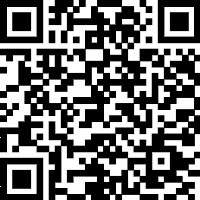This problem is even more confusing, with reference to the work of Spanish artist Pablo Picasso. Many titles of his work include the Spanish Laparoma. Picasso's powerful and original gifts have made him work in many areas. He produced some famous decorations for the Russian ballet company of Sergei Diaghilev (1917-1924). He also made significant innovations in lithography and linocut, producing large quantities of painted pottery. Picasso's "Studio (Pigeon)" in 1957 is drawn in a style reminiscent of Mathis. Meanwhile, the "Peace Dove" created by Picasso for the 1949 Paris Peace Conference became popular. It has become a symbol of the peace movement, the Communist Party, and other liberal groups. Picasso created a series of murals for the chapel in Vallauris, southern France. They focused on war and peace, Leo Tolstoy's novels, and the village itself was communist-led, consistent with the artist's own political tendencies. Pablo Picasso was influenced by the work of art of his early father. Paul Cézanne's painting urged Picasso to try perspective and start a cubism with Georges Braque.
A few years later, in 1949, after the end of World War II, Picasso was invited to create an image of peace. He modeled his first "dove of peace", modeled on the naturalistic painting of the dove given by Henri Matisse. He later evolved the design into a simple line drawing that is easier to recognize than it is today.
How did Pablo Picasso contribute to the world of art?
He was more interested in the transition from realism to Impressionism. In 1944 Picasso attended the International Peace Congress in Poland, and in 1948 Pablo created a poster for the Peace Congress Dove, a symbol of peace around the world.
Why did Picasso draw a dove of peace?
Peace Dove, 1949, Pablo Picasso. Guernica is highly regarded as one of the most moving anti-war paintings in the world, and Picasso was invited to design an image of peace.
Where did Picasso work on the murals of war and peace?
In 1951/52, Picasso, commissioned by the communist-controlled village of Vallauris in southern France, worked on a mural of war and peace. They were targeted at the chapel of the accused palace, which was to be transformed into a temple of peace.
How did Paul Cézanne influence Pablo Picasso?
Paul Cézanne's paintings urged Picasso to test his point of view and begin cubism with Georges Braque. For most of his life he found his own influence: his surroundings, myths, he thought he was there because of everything around him, and he did it. Was seen as a source of inspiration.
What kind of contribution did Pablo Picasso make?
He helped invent cubism and collage. He revolutionized the concept of sculpture constructed. The new techniques he brought to his graphic and ceramic works changed the course of both art forms for the rest of the century. Picasso's story as an artist is more about quantity than quality.
What did Pablo Picasso contribute to the world?
Picasso devoted himself to works of art that contributed significantly to the overall development of contemporary art in the 20th century, especially through the invention of Cubism (with artist Georges Braque) around 1907, for nearly 80 years in 91 years. Did.
What was Picasso's symbol of peace?
The Picasso pigeon became a symbol of the peace movement and the Communist Party's ideals after being used to explain the poster of world peace. A conference held in Paris in April 1949.
What kind of art movement did Picasso influence?
Cubism was one of the most influential styles of the 20th century.It is generally accepted that around 1907, Picasso's famous paintings began with the daughters of Avignon, including elements of the Cubist style.

Below you will find two helpful answers on a similar topic. 👇
What do baby rabbits look like when they are born?Do pet owners have lower blood pressure than non-pet owners?
